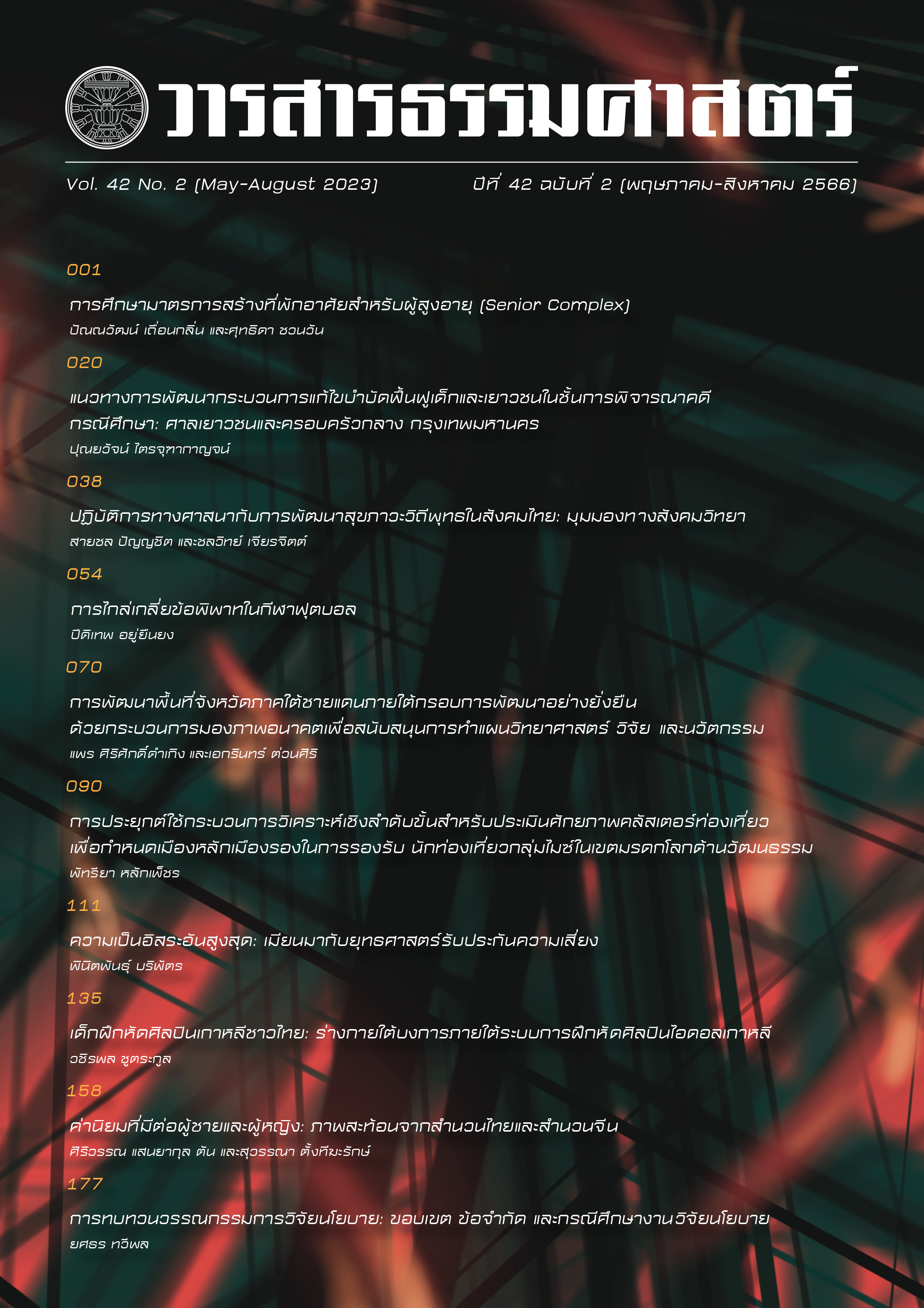Guidelines for Development on Juvenile Rehabilitation in the Legal Proceedings a Case Study of the Central Juvenile and Family Court in Bangkok
Main Article Content
Abstract
This article aims to demonstrate problems and obstacles in juvenile rehabilitation and suggest the guidelines for juvenile rehabilitation in the legal proceedings on Juvenile and Family Court and Procedure Act B.E. 2553 (2010). This qualitative research was collected through in-depth interviews with 17 participants, including judges, associate judges, psychologists, legal consultants, and juveniles who have allegedly committed an offense as well as their families.
The results show that the problem and obstacles to child and juvenile rehabilitation are into five categories as follows: 1) operation 2) facility 3) coordination 4) legislation 5) administration policy. In addition, the guidelines for development on juvenile rehabilitation present two models, which are 1) a model of rehabilitation process generated for the best interests of the child and juvenile in Thailand and 2) a model of case management which will finally develop for the best interests of the child and juvenile rehabilitation which from those issues will lead to the development of a model of juvenile rehabilitation in the legal proceedings for the best interests of the juvenile.
Article Details
References
เดชา สังขวรรณ. (2549). รูปแบบงานยุติธรรมเชิงสมดุลและสมานฉันท์ในระบบงานยุติธรรมเด็กและเยาวชน. เอกสารประกอบการเสวนาทางวิชาการ การนำหลักความยุติธรรมเชิงสมานฉันท์มาใช้ในศาลเยาวชนและครอบครัว. วันที่ 14 กันยายน 2549 ณ ห้องประชุมชั้น 7 สถาบันพัฒนาข้าราชการฝ่ายตุลาการศาลยุติธรรม ถนนรัชดาภิเษก กรุงเทพมหานคร.
เดชา สังขวรรณ และคณะ. (2559). การพัฒนายุทธศาสตร์แห่งชาติว่าด้วยการป้องกันอาชญากรรมเยาวชนสำหรับประเทศไทย. กรุงเทพฯ: สถาบันเพื่อการยุติธรรมแห่งประเทศไทย.
พระราชบัญญัติศาลเยาวชนและครอบครัวและวิธีพิจารณาคดีเยาวชนและครอบครัว พ.ศ. 2553
สิทธิศักดิ์ วนะชกิจ และคณะ. (2562). โครงการจัดทำข้อเสนอแนะเชิงนโยบายสำหรับประเทศไทยในการอนุวัติยุทธศาสตร์ต้นแบบและมาตรการเชิงปฏิบัติของสหประชาชาติว่าด้วยการขจัดความรุนแรงต่อเด็กในด้านการป้องกันอาชญากรรมและกระบวนการยุติธรรมทางอาญา. กรุงเทพฯ: สถาบันเพื่อการยุติธรรมแห่งประเทศไทย.
สำนักงานศาลยุติธรรม. (2562). รายงานสถิติคดีของศาลทั่วราชอาณาจักรประจำปี พ.ศ. 2562. สำนักงานศาลยุติธรรม. กรุงเทพฯ
อัจฉรียา ธิรศริโชติ และวีรฉัตร์ สุปัญโญ. (2563). การพัฒนากระบวนการเรียนรู้นอกระบบโรงเรียนแบบมีส่วนร่วมโดยใช้ปัญหาเป็นฐานเพื่อเสริมสร้างความสามารถด้านการจัดการ ความขัดแย้งเชิงสมานฉันท์สำหรับเยาวชนในชุมชนแออัด. วารสารครุศาสตร์ จุฬาลงกรณ์มหาวิทยาลัย, 48(3). (กรกฎาคม - กันยายน 2563), 407-427.
อัจฉรียา ชูตินันท์. (2551). กฎหมายเกี่ยวกับคดีเด็ก เยาวชน และคดีครอบครัว. (พิมพ์ครั้งที่ 2). กรุงเทพมหานคร: วิญญูชน.
Dubois, B., & Miley, K. K. (2002). Social Work: An Empowering Professional 4th Edition. New York: Pearson.
Somers, E. B. (2011). The role of social workers in reducing recidivism rates for juvenile offenders. (Master’s thesis). California State University, Faculty of Social Work.
The Annie E. Casey Foundation. (2010). The Missouri Model: Reinventing the Practice of Rehabilitating Youthful Offenders. Baltimore, Maryland.

